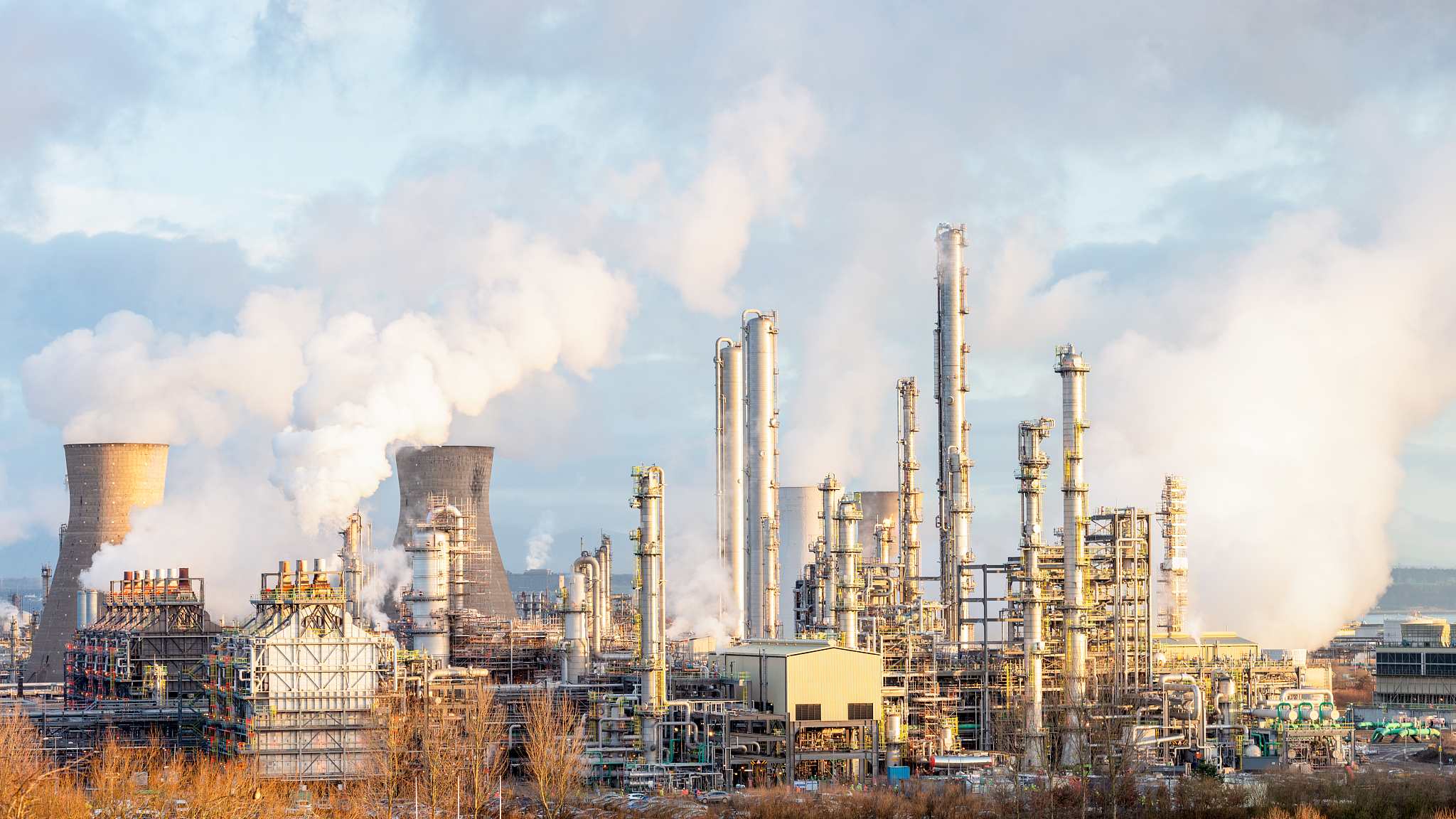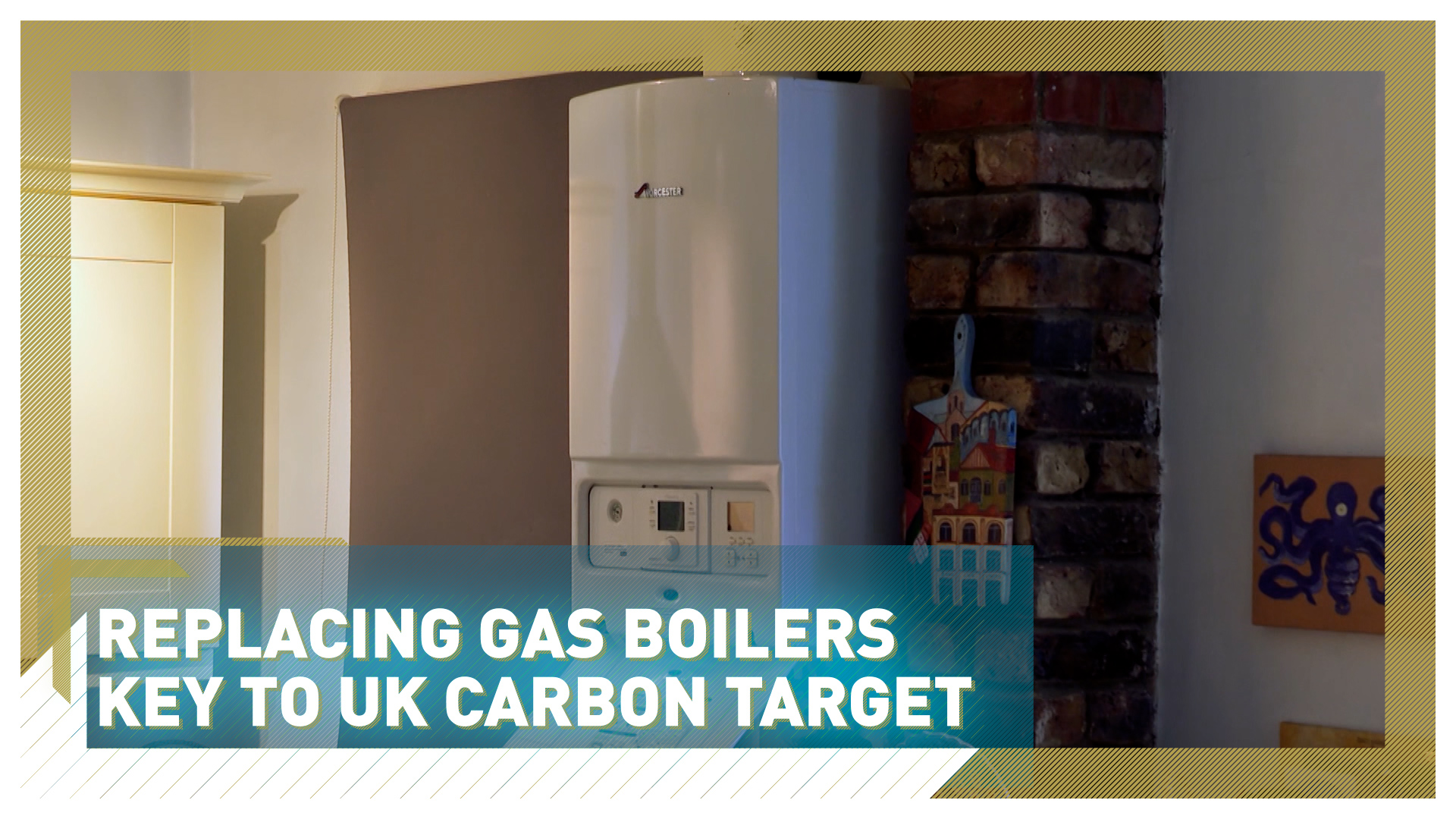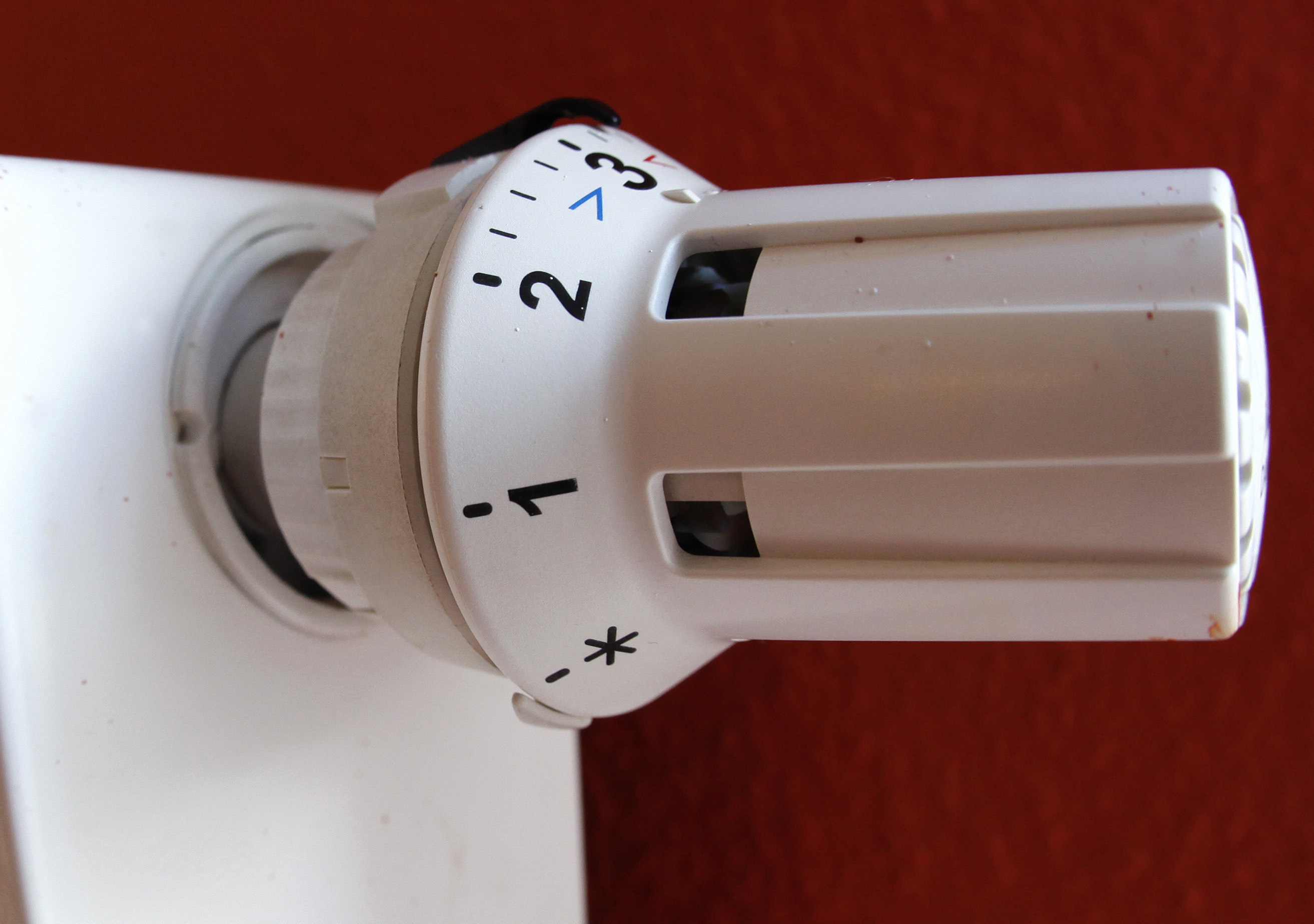
While in the U.S., heating made up 38 percent of all residential carbon emissions, cooking, electricity and lighting were a close second, making up 24 percent of residential emissions. /VCG/
While in the U.S., heating made up 38 percent of all residential carbon emissions, cooking, electricity and lighting were a close second, making up 24 percent of residential emissions. /VCG/
How green is your boiler? The UK has committed to cut its greenhouse gas emissions by almost 80 percent by 2035 compared to 1990 levels. But forget recycling, composting and switching your diesel car to electric – a huge amount of UK CO2 emissions come from heating our homes. So, if we're serious about tackling climate change, perhaps we should take a closer look at our domestic appliances.
"A lot of people have no idea" said Jan Rosenow, European Director of global energy think tank, the Regulatory Assistance Project.
"They think about flying, maybe they're eating meat, maybe they think about their car. But very few people think about emissions from their home."
03:03

Heating by itself counts for a large portion of our carbon emissions. In 2014, it was blamed for 40 percent of the world's energy-related emissions, according to The Department for Business, Energy and Industrial Strategy in the UK.
In the United States, space heating and cooling made up 38 percent of all residential carbon emissions and 30 precent of commercial carbon emissions.
Researchers at the University of York recently identified residential heating as one of the reasons why the latest UK lockdown caused less of a cut in air pollution than the first lockdown in 2020.
According to their findings, air pollution decreased by 52 percent in 2020, but only decreased by 28 percent from January 2021. They argued that the main reason for this difference was the nitrogen dioxide caused by people working from home.
"Despite restrictions being similar, it seems the impact of the winter lockdown reduced pollution less due to factors like people working from home and therefore using more heating and others who were going into work starting cars in colder conditions which creates more pollution," said Rhianna Evans, a student at the University of York who worked on the study.

During the UK's most recent lockdown, air pollution dropped by 30 percent in London and 25 percent in Leeds, which is lower than the 59 percent drop from the previous year. Both of those cities have large workforces that were working from home and the researchers from the University of York said that explained the smaller decrease in air pollution. /VCG/
During the UK's most recent lockdown, air pollution dropped by 30 percent in London and 25 percent in Leeds, which is lower than the 59 percent drop from the previous year. Both of those cities have large workforces that were working from home and the researchers from the University of York said that explained the smaller decrease in air pollution. /VCG/
How the UK is tackling the problem
The UK's independent adviser on tackling climate change, the Climate Change Committee, says 85 percent of UK homes are run on gas boilers, contributing around 15 percent to the total C02 emissions generated in the UK.
The Government has set a target of 600,000 electric heat pumps to be installed each year by 2028.
But at the current rate, it will take at least 700 years to decarbonize the housing stock and get to net zero emissions.
"The UK has some of the leakiest homes in Europe," said Rosenow.
"Reducing consumption by insulating buildings, installing better windows, that is the first step. And then to take advantage of the much greener electricity that we have means to switch from currently mainly using gas boilers to a technology called heat pumps."
For decades, Sweden, Norway and Finland have been electrifying their heating using renewable energy which has lower emissions.
But replacing gas boilers with electric ones is an enormous and expensive task. Policymakers have warned that replacing gas boilers with greener alternatives could cost homeowners up to $35,000, including investing in larger radiators and pipes.
So some manufacturers have hit on hydrogen for a cleaner, greener, home heating future, such as Worcester Bosch, which is making a hydrogen boiler prototype.

Turning down the thermostat on the radiators will only do so much. Gas boilers need to be replaced in millions of homes. (AP Photo/Michael Probst)
Turning down the thermostat on the radiators will only do so much. Gas boilers need to be replaced in millions of homes. (AP Photo/Michael Probst)
"We have this wonderful gas infrastructure in the UK," said Martyn Bridges, director of technical communication and product management at Worcester Bosch.
"There is about 150,000 miles of gas pipe zigzagging its way under the roads and cul-de-sacs of the country. And 85 percent of all homes run from a gas central heating system - so to replace the boiler, which is quite small, with anything other than another boiler, is very difficult to do.
"For existing homes to remove the existing boiler and fit a hydrogen boiler instead, is no disruption for the homeowner. And from a price perspective, the cost, we believe, of the hydrogen boiler when selling on the same scale that natural gas boilers do, will be more or less the same."
Gas boilers will be banned in new build homes in the UK from 2025 and could be phased out completely by the mid 2030s. But since a greener replacement unit will likely cost more to run than a gas boiler, there isn't much incentive for homeowners to rip out their functioning, albeit C02 belching boilers.
"Ask people how likely they are going to be to switch to low carbon hearing the next time they change their boiler, very few people indeed are prepared to make that change," said Rosenow.
"So we have a huge mountain to climb. But the debate is picking up. This is the next frontier of decarbonizing the economy," he said.
Yet while policy makers' new climate targets spell out why and when they want change - they are still hazy on how, and whether the taxpayer, consumer or industry is going to pay for it.

